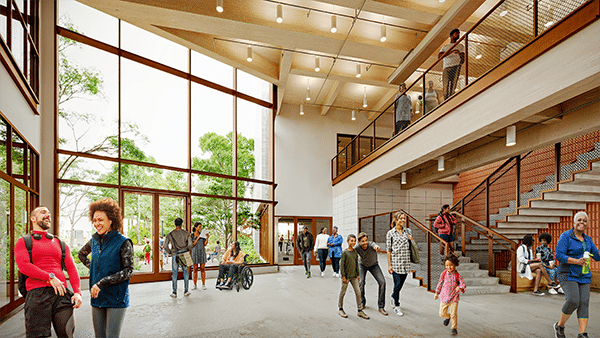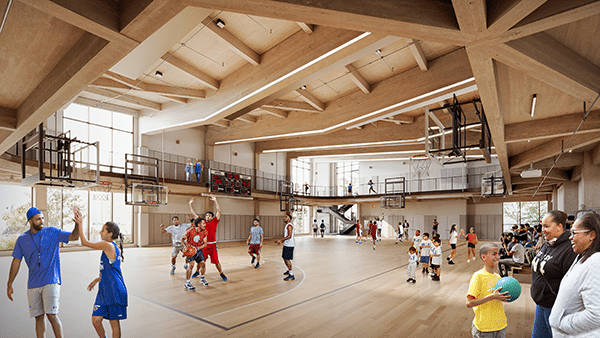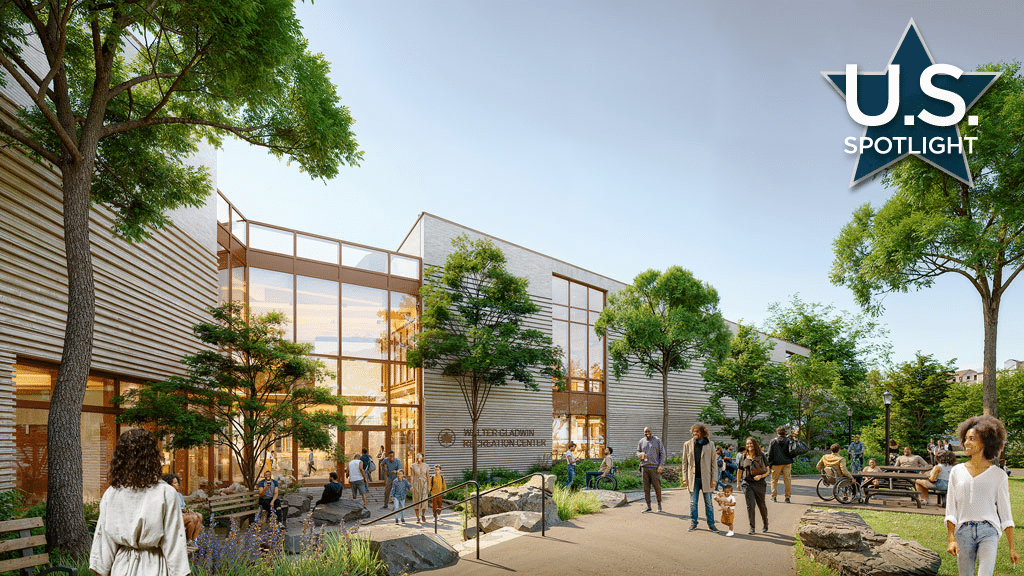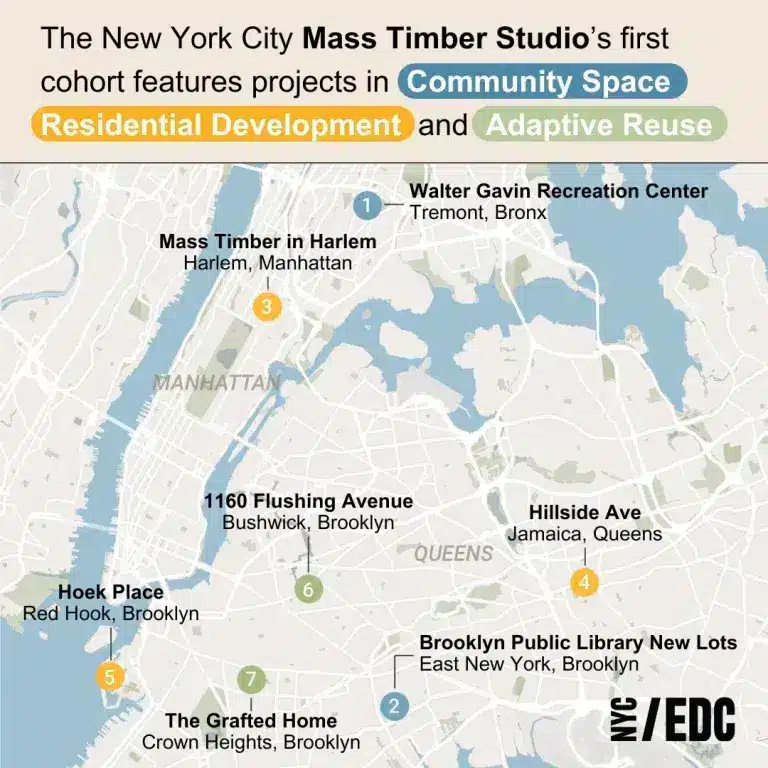The New York City Mass Timber Studio—the New York City Economic Development Corporation’s (EDC) solution to “support active mass timber development projects in the early phases of planning and design”—has been dubbed a resounding success, with participants now driving mass timber projects city-wide. That is according to participants who spoke to Daily Commercial News following last week’s wrap-up:
“It is a game-changer in making mass timber seem like a realistic way to move forward more smoothly through design, procurement and construction,” said Martha Bush of Marvel Designs, the architect behind the 36,000-square-foot Walter Gladwin Recreational Center in the Bronx.
Bush said the key to success lay in New York City’s Department of Buildings (DOB) publishing a technical bulletin clarifying regulatory concerns around mass timber – “things that were unclear in the code.”
Now, other projects from day one will have those required clarifications so they won’t have to spin their wheels and wonder how to proceed.
Martha Bush, Director at Marvel Designs, one of the participants involved in the New York City Mass Timber Studio
She said many of the studio’s questions were about construction details because the recreational centre’s design was “quite far along,” adding that the Bulletin “allowed us to finish our construction documents, and the new building has been approved by the DOB.”



According to Seyfihan Usarer, COO of Algoma, a developer who also participated in the programme, the studio provided Algoma with “regular check-ins” with the DOB to accelerate the design process:
“If it wasn’t for the studio, the design process could be prolonged by months, which would increase the cost for the real estate developer,” said Usarer, who is working on a four-storey, 10,000-square-foot housing complex called the Prospect at Crown Heights in Brooklyn. He said Algoma’s goal is to “create a scalable and sustainable prototype” that delivers needed housing quickly and cost-effectively in the city:
There is an amazing potential to create a repeatable (residential) product for the Brooklyn market,” noting that with the right knowledge and resources, developers can cut time and costs over traditional materials.
Seyfihan Usarer, COO of Algoma, a real estate developer that is looking turning to mass timber over steel and concrete to de-risk investments and build a more sustainable product.
According to Bush, “there’s definitely a groundswell of interest” in timber-led solutions, with New York City’s push to reduce the embodied carbon footprint of its capital construction projects by 50% by 2030, meaning “mass timber will very quickly become part of the conversation.”
“I don’t see a limit for the type of buildings it can be used for unless you’re talking about our tallest buildings.”
Martha Bush on potential residential, commercial and mixed-use buildings being constructed from mass timber.
New York City Vows to Bring Mass Timber to the Masses
In March, Wood Central revealed that EDC launched the mass timber incubator to encourage developers to consider mass timber construction systems instead of traditional construction materials. Even though the pilot is small in scale, the EDC hopes it will help New York catch up with cities on the West Coast and Europe that have started embracing mass timber construction.
“It’s just making sure that more New Yorkers in the building construction trade have firsthand experience with it,” Mr Kushner said. “It’s a game of numbers and scale.”
To start the incubator, New York City had to amend its building code to allow the use of cross-laminated timber. Aside from code restrictions, cost and lack of familiarity have been enormous disincentives for builders to embrace mass timber construction systems until now.

According to Justin Den Herder, a structural engineer from Silman Structural Solutions, one of the engineers working on the seven incubator projects, “Integrating mass timber into buildings is a big step forward.”
Part of that step stems from design and construction teams discussing challenges with the New York City Department of Buildings when using mass timber. “Sharing information can make it easier for others to file permits down the road,” Mr Herder added.
“What obstructions are they encountering in implementing mass timber? What questions do they have about its benefits?” he said, adding that “we will share across projects to disseminate that information so more builders can follow this path.”
- To learn more about the New York City Mass Timber Studio, click here for Wood Central’s special feature.






